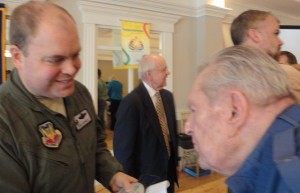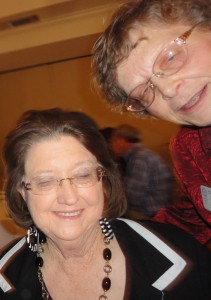Not everyone who filled out the survey as an entry to win the book of their choice asked questions. But some did. These are their questions and our answers.
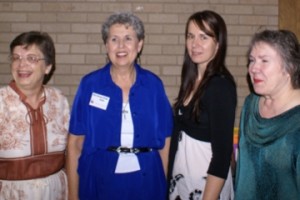
The original “quartet” – Barbara Rollins, Becky Haigler, Karen Greene (Kerin Riley-Bishop) and Ginny Greene, November 15, 2011
How did you all begin the process of writing these amazing stories?
The beginning was not in writing stories but a decision to collect them from other writers and to become editors of a book of nostalgia/memoirs. It all began Saturday, October 21, 2006, about noon. Dusty Richards had presented a workshop for Abilene Writers Guild in Abilene, Texas. Ginny Greene, the then-current AWG president and I, Barbara Rollins, immediate past president, were at the end of the buffet line. And we were inspired by Dusty to get busy. I’d written some things, even had five books published, my juvenile novel a month earlier. Ginny had been writing columns for small-town newspapers for a while. But we wanted to do something together and quickly decided on an anthology by and about baby boomers. We tossed around some names of people who might also solicit, select, and edit the book as well as names for the collection. We came up with two: Silver Boomers and Freckles to Wrinkles. But the titles were equally attractive and didn’t fit well as title and subtitle.
By the time we’d asked among the other members of a poetry critique group we participated in and recruited our others partners, Becky Haigler and Karen Greene (Ginny’s daughter who edited as Kerin Riley-Bishop) we put out calls for submissions for the two books simultaneously.
By October of the next year we’d put together Silver Boomers – a collection of poetry and prose by and about baby boomers with authors from Indonesia to England, Canada and many of the United States. And I had it set up as a book. We’d chosen a publisher and gave it to him at the 2007 AWG workshop. The book was set out in the size we intended using poems to fill pages, a short poem at the end of a prose piece that ended a third of the way down a page.
But our pride and joy was the crawl line which remains a beloved characteristic of all our anthologies. The continuous block of text stretches from the front of the book to the last page like a line rolling across the bottom of the television. When we described it and showed it to the publisher, he said it couldn’t be done. My partners, in unison, said, “Barbara did it.” They, of course, knew I’d struggled mightily with it, but by that point I did have a functional way to do it. The editor disagreed. After spending a weekend on it he gave us a draft with all poems, no matter how brief, starting like the prose pieces at the top of the page. And the crawl line had been deleted.
We took the project back and soon decided to become a publishing company ourselves. It took a while, and there were a lot of mistakes, but we published Silver Boomers in March of 2008 and Freckles to Wrinkles in July of that year. Seven more have followed, besides the seventeen single-author books.
(If you want to know how a particular book came to be, feel free to ask that in the comments or on our Facebook or Twitter pages.)
How do you decide which of the three presses to use for each book?
This is the second time this week someone I would have thought understood the difference has asked this question. Obviously the real message is that we don’t communicate that well enough! So thanks for the question!
As I’ve just described, the idea of doing anthologies was to do them as memoir and nostalgia. We’ve gone from the generalized Silver Boomers, Freckles to Wrinkles and This Path to more specific topics, but they all remain memoir and nostalgia — about grandparents, early reading experiences, the military, holidays, widowhood and waiting. The two non-anthologies published as Silver Boomer Books volumes are single-author memoir and nostalgia, still like the anthologies in the form of prose pieces and poetry. Those are Song of County Roads by Ginny Greene and Crazy Lady in the Mirror by Madelyn Kamen.
By the time we had published Silver Boomers and Freckles to Wrinkles we had been asked to publish two other books that were not memoir/nostalgia. Instead, they were inspirational and we knew of others we were interested in publishing. To keep the company name from becoming a mishmash, we decided to add Eagle Wings Press as an imprint for 12-Step Recovery and Spiritual materials. Those two books were Slender Steps to Sanity – Twelve-Step Notes of Hope by OAStepper and Writing Toward the Light – A Grief Journey by Laura Flett.
Since that time Eagle Wings Press has published A Time for Verse – Poetic Ponderings on Ecclesiastes by Barbara B. Rollins, Survived to Love by Ed H (identified that way while he was a living member of A.A., now Edward L. Hennessy), White Elephants – a memoir by Chynna T. Laird, A Cloud of Witnesses – Two Big Books and Us by Barbara B. Rollins with OAStepper, Insights from the Jobsite by Robyn Conley, and The Innkeeper’s Christmas Eve by Barbara B. Rollins, illustrated by Sandy Carter.
When Jim Wilson asked us to publish Poetry Floats – New and selected Philosophy-lite it didn’t fit either Silver Boomer Books nor Eagle Wings Press so Laughing Cactus Press was born for fiction and poetry.
The original question, though, was how do we decide which one to use for a proposed book. Some of course are obvious. Becky identified Innkeeper as poetry fiting in Laughing Cactus Press. I thought the correct imprint was Eagle Wings Press because it’s the Christmas story, so spiritual. The subtitle of White Elephants is “a memoir” but we felt the recovery part of it, surviving childhood with an addict mother, made it spiritual and recovery (Eagle Wings) rather than a memoir (Silver Boomer Books). Haiku Elvis – A Life in 17 Syllables (or Less) could have been memoir/nostalgia, for we would also include biography there, but they’re poems, so Laughing Cactus Press.
That’s a whole lot of words when the answer is, “We put it where we think it fits!”
Did you ever get United (Supermarket) to take the books?
Sigh. No, Suanna, I didn’t. I’d love to tell you it was not for lack of trying, and I would. But it’s not the truth. I never got up the nerve to make the pitch outside of the Toastmasters meeting where you heard it. Do you think my making it this public will get me to try it now?
When is your next writing/poetry contest?
Our next writing/poetry contest will be our first. At least with that nomenclature. Actually every call for submissions for an anthology is a writing/poetry contest, and the prize is getting published in our anthologies. If you look back at the last few blog posts here, you’ll see the exploration for the subject matter of the next anthology. However, we do have the Twelve-Step Recovery anthology open for submissions. (You can see in one of the editors’ poems in an anthology years ago that were were privately calling it the furtive recovery anthology. But it really is moving towards fruition but needs some more good work submitted.)
In response to the question of choosing imprints, we had to discuss whether a recovery anthology was Silver Boomer Books or Eagle Wings Press.

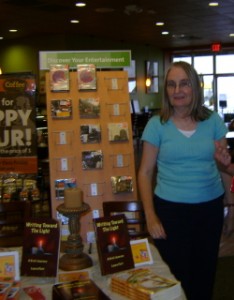
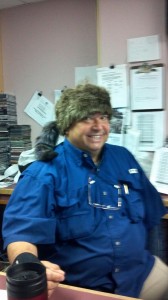

 Bettsy has beed kind enough to welcome me into her home after I cut myself severely on my right arm. She picked out this as ideal for me – and means more than the graphic fits. Bettsy stands beside me and keeps hers hands off the struggle of the moment, muttering, “She’ll ask for help when she wants it.”
Bettsy has beed kind enough to welcome me into her home after I cut myself severely on my right arm. She picked out this as ideal for me – and means more than the graphic fits. Bettsy stands beside me and keeps hers hands off the struggle of the moment, muttering, “She’ll ask for help when she wants it.”
